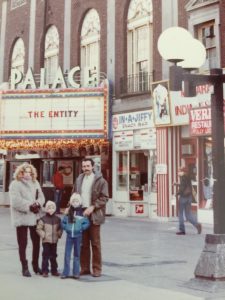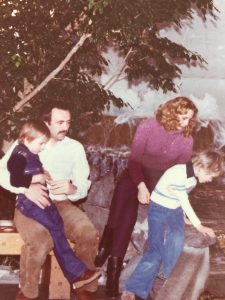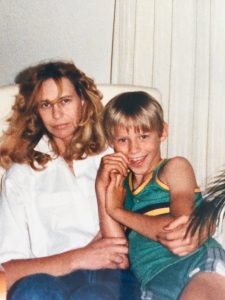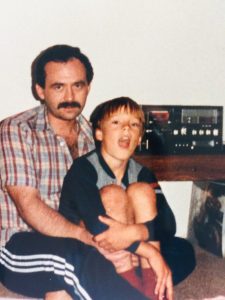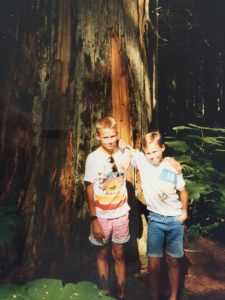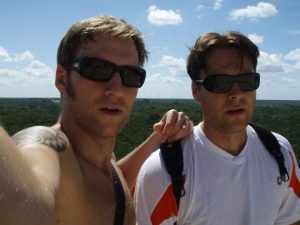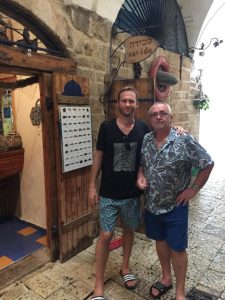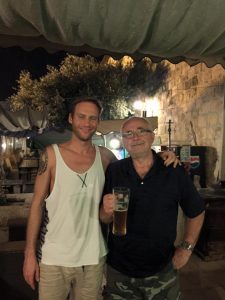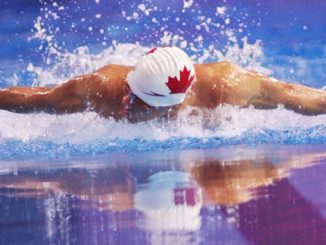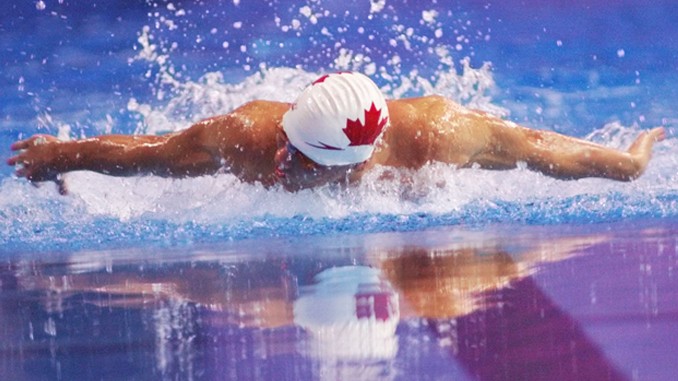
The Solidarity movement was a time of enthusiasm and great hope for Poland. However, it was not difficult to predict that, like always in the communist countries, the “wind of changes” would be brutally choked. Fearing the worst, many Poles decided to emigrate. The family of Kazimierz and Sabina Pietuch was one of them. A difficult decision was made and after applying for passports, the expected summons came from the passport office in Elbląg.
– Next!
The passport office clerk (they were in fact secret police agents) pulled four passports out of a drawer and tossed them casually on the desk.
– So we’re going on holidays to Switzerland with the whole family? What an expensive trip it would be! We’ll save you some money. The youngest son is only three years old, he won’t remember anything; let him stay in Poland, and keep your airline tickets cost down.
He took one passport from the pile and put it back in the drawer.
– So what, will you take three passports?
Kazimierz Pietucha took three passports, and after crossing the Iron Curtain, the family changed the decision about the direction of emigration: a journey to dreamed Australia seemed too risky, as it was still necessary to get the youngest son out from Poland, and the chance of doing so was rather slim. Somehow, Kaz’s mother managed to trick the martial law regime, and was able to bring the youngest boy to a refugee camp in Austria. The decision to go to Canada was already made, and after a year of waiting for an immigration visa, the family settled in Edmonton, Alberta. A great life adventure began for the future Olympian, six-year-old Przemek Pietucha.
.
More than thirty years later, in June 2015, four former students of the Virginia University in Charlottesville (including Przemek Pietucha, known in America and Canada as “Shamek”) gathered at Casey Hughes’ home in Main for a multi-day reunion to cherish and honor the bond that was established during their intensive studies in the late nineties, combined with a swimming career and a deep friendship that lasts throughout life. The friends spent some time going to the beach, remembering their student days, wondering about destiny and the course of their lives so far, sharing their plans for the future. Especially Shamek was full of optimism and hope related to his immediate plans to travel to India, where he was to continue his extraordinary medical career, built on the constant expansion of knowledge and drawing inspiration from beyond official, scientific medicine. None of the friends thought that the meeting was a farewell to Shamek, who died a tragic death a few months later, at the beginning of the long-awaited sabbatical trip to India.
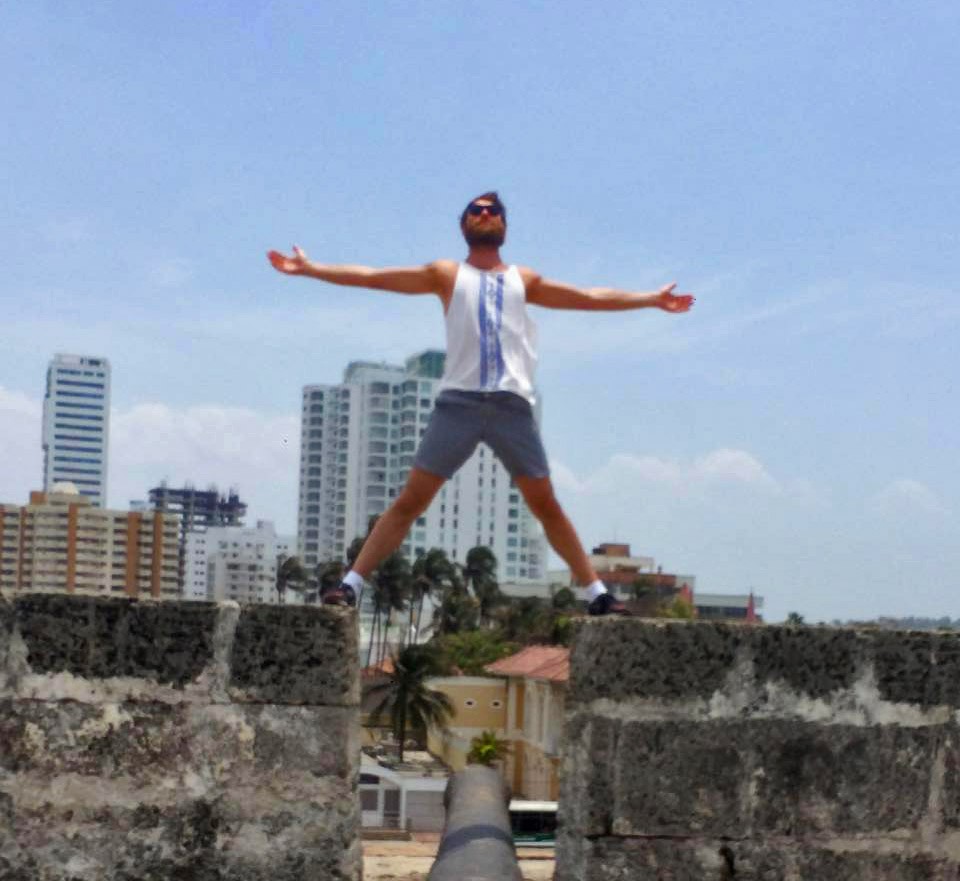
Cartagena battle fort. Looking up and staying fit.
Casey Hughes talks about this extraordinary reunion with great emotion, fifteen years after that beautiful, inspiring and crazy period of their youth. He believes that it was a gift that allowed him to return to the sources of life choices, shared moments and emotions, which make our way through life not lonely and deprived of the presence of loved ones. The emotional memories and statements of Shamek’s best friend are confirmed by other interviewees. Shamek was an exceptional man, with the rare ability to be totally devoted to the person he was with at the moment. It applied to everyone: family, friends, patients, and random people. People from all over the world came to the funeral in Toronto, even those who knew Shamek for only a few days. Every person leaves a trace, it is worth bending over every existence and cry over death. Przemysław Pietucha was one of those extraordinary chosen ones of a special, rich and colorful life, after which the trace remains in the memory forever, and his vital force permanently affects the others, all those seeking inspiration and strength.
Who was Shamek Pietucha? His restless spirit searched for perfection all his short life, striving for wholeness and complete fulfillment. He was an inspiration to make the most of skill, intelligence and natural talent. As a twelve-year-old boy, he started his sports career swimming at the Edmonton Keyano Club. This decision was inspired by a friend of the family, Marek Barłowski, who was the club’s assistant coach. The beginnings were difficult, trainings conducted three times a week did not indicate that Przemek had any exceptional swimming talent. However, perseverance combined with work proved otherwise. Shamek’s greatest sport successes are related to his studies at the University of Virginia in Charlottesville, VA. Surrounded by a close-knit group of friends, under the supervision of coach Mark Bernardino, Shamek won the titles of the American NCAA League championship, individual gold medal at 200 meters butterfly, silver at 100 m butterfly and bronze in the PanAm relay race in Winnipeg in 1998, as well as the silver medal at 200 meters butterfly at the World Championships in Athens in 2000.
After another success at the world championship in the pre-Olympic year, dreams of participating in the games in Sydney became real. Despite the fact that Przemek left his homeland as a six-year-old boy, his Polish roots were still strong and he was thinking to participate in the games as a member of the Polish national team. His father Kaz contacted the Polish Swimming Federation. The name of Shamek, who already belonged to the world’s elite of swimmers, was not unknown to Polish officials, but the required participation in the training camp of the Polish Olympic team was not possible for a swimmer who had already started medical studies and continued his individual training regime. For this reason, the name Przemysław Shamek Pietucha belongs to the honorary list of Canadian Olympians. His coach at that time was Jan Bidrman, who was also connected to the swimmer by ties of friendship. Jan Bidrman, after a few years’ break in contacts with Shamek, met with him several months before his death. It is hard to avoid a moving impression that Shamek, as if sensing his destiny, was saying goodbye to his friends, so that his image would remain in their memory as a clear, living trace of the permanent presence.
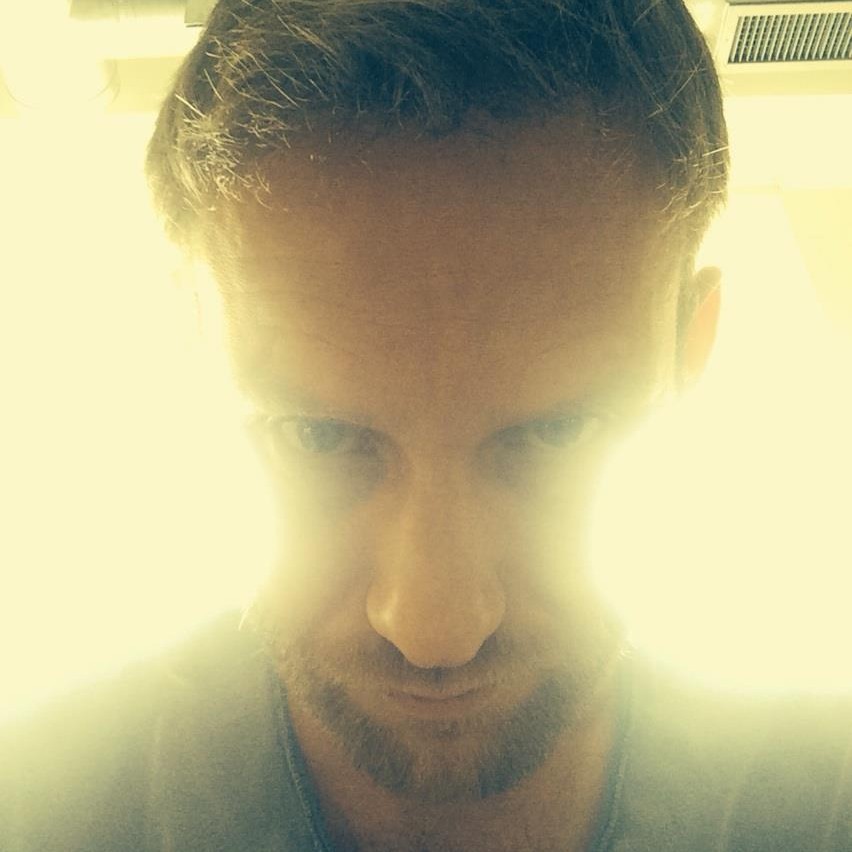
Selfie, June 14, 2014
The greatest emotions, however, are evoked by the photographs from the trip to Israel with his father – just before his departure to New Delhi and his death, testifying to the great bond and love of father and son, who tried to use every moment as if it would never happen again. Przemek was very close to his family. He always showed devotion and love to his mother, grandmother, and brother; he cultivated these feelings with filial care and openness that is unheard of in our times of keeping distance and hiding emotions.
.
The trip to India was supposed to be a kind of crowning achievement of Przemek’s unique medical career. Many years of medical and interdisciplinary studies were to be enriched with the initiation of yoga, the knowledge and experience of which Dr. Shamek tried to use in his practice and in-depth knowledge of the possibilities of anesthesiology. Even before this one-year sabbatical trip, Shamek was one of the ten most recognised doctors in the world in his specialty. At the peak of his abilities, he was ready to fully share his knowledge and healing skills. A close friend Speranza Dolgetta even thinks that the ability to contact and approach patients in a unique way made Shamek not only a doctor, but also a healer.
After the shocking news of Shamek’s death, Casey Hughes travelled by car to the Toronto funeral. At dawn, after a storm, a rainbow appeared over the bridge in Main. Casey paid little attention to it; it was only when he saw a similar rainbow when approaching Toronto over QEW highway that he realized that the rainbows were not just a random coincidence of atmospheric phenomena. They appeared to be signs of hope, a signal that life is stronger than death, constantly returning in memories and signs of presence, testifying to the interpenetration of worlds. Casey often thinks of Shamek, uncannily feeling his presence. Last year, a few days after his death anniversary, he went to the beach with a custom-made surfboard, designed to commemorate his friend Shamek. The rising sun is painted on the board. Casey paused on the shore for a moment, and then a double rainbow appeared in the sky, a recurring sign, recalling the beautiful, uplifting words of Pearl Jam’s song
“And the wind keeps roaring. And the sky keeps turning grey.
And the sun is set. The sun will rise another day.“
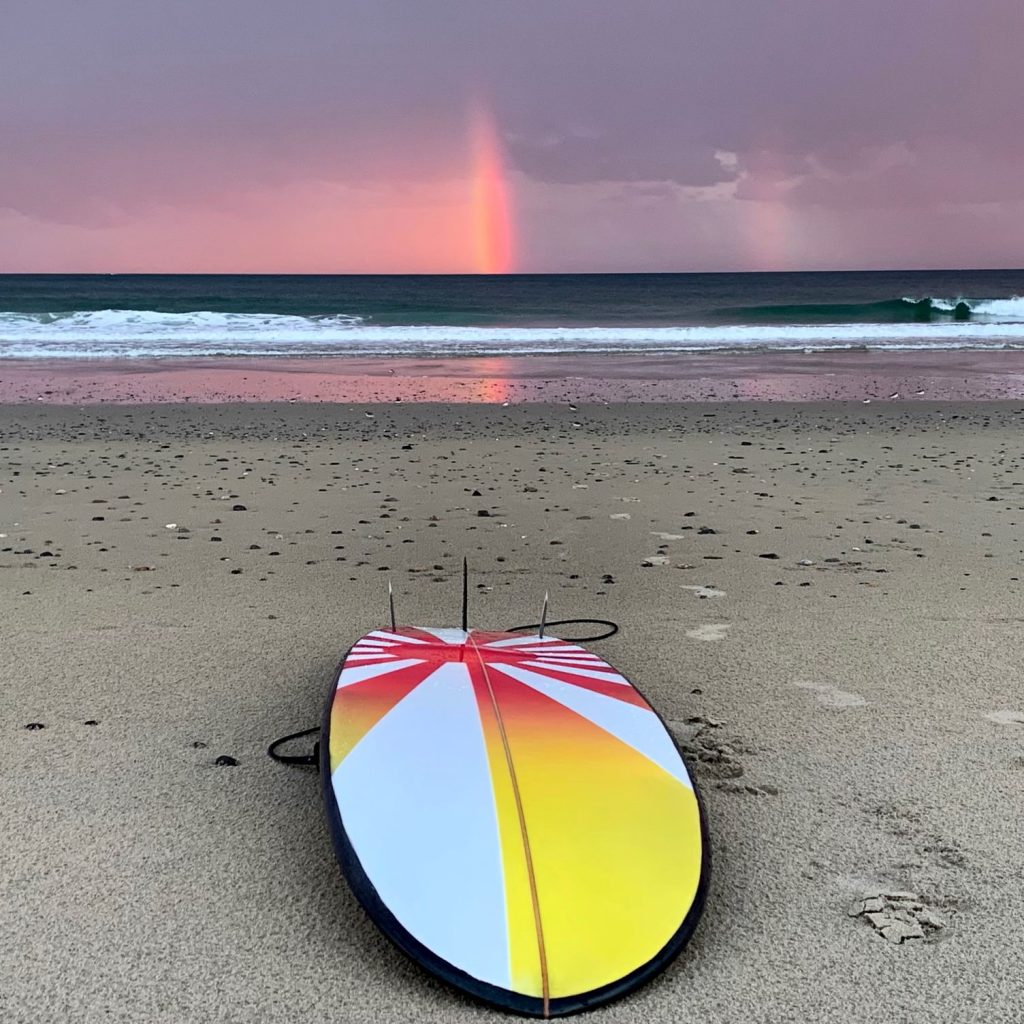
.
The butterfly (a.k.a. dolphin) style is considered the most difficult of the four basic swimming styles. Its technique was inspired by the natural movement of dolphins in the water. The style is very effective but requires strength, good coordination of movements and the ability to “wave” in the water. This is the most difficult swimming style to learn.
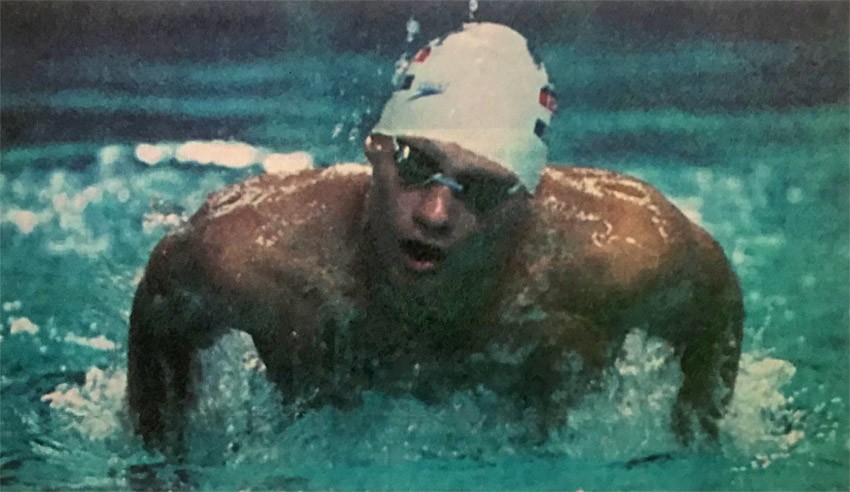
Edmonton Keyano Swimming Club, fot. Larry Wong, Edmonton Journal
It was no coincidence that Shamek chose this style in his swimmer career. All his life he made the most difficult choices, striving for beauty and perfection. In his crowning distance of 200 meters butterfly, he used his extraordinary intelligence, endurance and technique to win and reach the finish line without wasting a fraction of a second. He was Canada’s record holder for many years. Similarly, his life passed as a brief moment, a breathlessly conquered distance of 200 meters.
Aleksander Rybczyński
Canadian Olympian Shamek Pietucha Passes at the Age of 39
Images by permission: Getty’s Images; double rainbow photo: Casey Hughes. Other photos:Shamek’s parents archive.

